Minister without portfolio
A minister without portfolio is either a government minister with no specific responsibilities or a minister who does not head a particular ministry. The sinecure is particularly common in countries ruled by coalition governments and a cabinet with decision-making authority wherein a minister without portfolio, while he or she may not head any particular office or ministry, still receives a ministerial salary and has the right to cast a vote in cabinet decisions. In some countries where the executive branch is not composed of a coalition of parties and, more often, in countries with purely presidential systems of government, such as the United States, the position of minister without portfolio (or an equivalent position) is uncommon.
Australia
Willie Kelly was given the title in the Cook Ministry from June 1913 to September 1914.
Stanley Bruce was given the title of minister without portfolio when he took up his position in 1932 as the Commonwealth Minister in London. He was given the title by Lyon's Cabinet so that he could better represent the PM and his colleagues free from the limitations of a portfolio. In this case the title was a promotion and carried considerable responsibilities.[1]
Bangladesh
Bangladesh appoints ministers without portfolio during cabinet reshuffles or fresh appointments. Ministers are not usually appointed without portfolio as a coalition negotiation – all long run ministers end up with a portfolio. Suranjit Sengupta was a minister without portfolio in Sheikh Hasina's second government.[2]
Bulgaria
- Bozhidar Dimitrov (2009–2011)
Canada
While the minister without portfolio is seen by some as a mere sinecure appointment, it has been a role that numerous political notables have played over time, including former Prime Minister Jean Chrétien, who filled the role in a Pearson cabinet in the 1960s; John Turner also "kept a seat warm" in a Pearson cabinet. Notable Conservatives who filled the role include R. B. Bennett, and Arthur Meighen; however, Meighen served this role after he had been prime minister.
The title of minister without portfolio has been used off and on; in recent times, though, the title has fallen out of favour, and the last minister without portfolio, Gilles Lamontagne, was promoted to postmaster general in 1978. The practice has continued under the guise of ministers of state without responsibilities in the ministers' titles.
The position has also been filled on the federal or provincial level by experienced politicians near the end of their careers as a way of allowing them to counsel the government and take on projects without the burdens associated with administering a government department.
Croatia
|
Deputy Prime Ministers without portfolio
|
Denmark
Three "control ministers" served as ministers without portfolio during World War I.
After the Liberation of Denmark in May 1945, the first Danish cabinet included four ministers without portfolio. Among these were Danish ambassador to the U.S. Henrik Kauffmann, who had conducted his own foreign policy throughout the war and refused to follow orders from Copenhagen as long as Denmark remained occupied by a foreign power. Kauffmann served in this capacity from 12 May to 7 November 1945. The three other holders of this title had joined the cabinet a few days before – Aksel Larsen (Communist Party of Denmark), Kr. Juul Christensen (Danish Unity) and Frode Jakobsen (Social Democrats).
Lise Østergaard held a position as minister without portfolio with special attention to foreign policy issues in Anker Jørgensen's cabinet from 26 February 1977 to 28 February 1980.
Anders Fogh Rasmussen appointed Bertel Haarder to Minister without Portfolio, but effectively Minister for European Affairs. Haarder served in this capacity from 27 November 2001 to 18 February 2005. The reason for appointing a minister without a ministry was the Danish European Union Presidency of 2002. Haarder was considered the most experienced Danish politician on European affairs.
Estonia
- Jaan Tõnisson (1918) (provisional government)
- Karl Ast (1924–1925)
- Juhan Kaarlimäe (1944)
- Johannes Sikkar (1952–1953) (in exile)
- Artur Terras (1952–1953) (in exile)
- Aksel Mark (1956–1962) (in exile)
- Arvo Horm (1956–1964) (in exile)
- Peeter Panksep (1956–1964) (in exile)
- Eduard Leetmaa (1959–1962) (in exile; appointed, but did not enter office)
- Ivar Grünthal (1962–1964) (in exile)
- Renate Kaasik (1971–1990) (in exile)
- Verner Hans Puurand (1973–1977) (in exile)
- Jaan Timusk (1973–1990) (in exile)
- Ants Pallop (1973–1992) (in exile)
- Arvo Horm (1977–1992) (in exile)
- Ivar Paljak (1985–1990) (in exile)
- Olev Olesk (1986–1990) (in exile)
- Endel Lippmaa (1990–1991) (interim government)
- Artur Kuznetsov (1990–1991) (interim government)
- Klara Hallik (1992) (interim government)
- Arvo Niitenberg (1992) (interim government)
- Jüri Luik (1992–1993)
- Peeter Olesk (1993–1994)
- Eiki Nestor (1994–1995)
- Arvo Niitenberg (1994–1995)
- Ants Leemets (1995)
- Jaak Allik (1995–1996)
- Endel Lippmaa (1995–1996)
- Tiit Kubri (1995–1997)
- Riivo Sinijärv (1996)
- Andra Veidemann (1996–1999)
- Peep Aru (1997–1999)
- Katrin Saks (1999–2003)
- Toivo Asmer (1999–2003)
- Eldar Efendijev (2002–2003)
- Paul-Eerik Rummo (2003–2007)
- Jaan Õunapuu (2003–2007)
- Urve Palo (2007–2009)
- Urmas Kruuse (2014)
- Anne Sulling (2014)
Germany
- Hermann Göring (1933)
- Rudolf Hess
- Arthur Seyss-Inquart (1939–1945)
- Hjalmar Schacht (1939–1943)
Since 1949, a Federal Minister for Special Affairs (Bundesminister für besondere Aufgaben) is a member of the Federal Government that does not have charge of a Federal Ministry, although some have simultaneously been Chief of the Federal Chancellor's Office.
Hungary
- Zsolt Semjén (2010–present)
- Tamás Fellegi (2011–2012)
India
- N. Gopalaswami Ayyangar - Nehru government[3]
- Mamata Banerjee - Vajpayee government[4]
- Natwar Singh - Manmohan Singh government[3]
- Arun Jaitley - Narendra Modi Government[5]
Indonesia
Since the inception of the state, Indonesia had ministers without portfolio, usually given the title Menteri Negara ('State Minister'). The number was not fixed, entirely depended on the behest of the President. Below is the list of Ministers without Portfolio in each Cabinet.
Presidential Cabinet (19 August – 14 November 1945)
- Mohammad Amir
- Sartono
- Alexander Andries Maramis
- Oto Iskandar di Nata
First Sjahrir Cabinet (11 November 1945 – 28 February 1946)
- Rasjidi (on religious affairs)
Third Sjahrir Cabinet (5 October 1946 – 27 July 1947)
- Hamengkubuwono IX
- Wahid Hasyim
- Wikana (on youth affairs)
- Soedarsono
- Tan Po Gwan
- Danoedirdja Setiaboedi
Sixth Development Cabinet (6 June – 1 October 1997)
The cabinet was unique, with President Suharto moved the Minister of Information Harmoko to the office of State Minister of Special Affairs (Indonesian: Menteri Negara Urusan Khusus) on 6 June 1997. The Ministry of Special Affairs was dissolved on 1 October 1997, following the inauguration of next-term's parliament and the appointment of Harmoko as its speaker.
Ireland
The Ministers and Secretaries (Amendment) Act 1939 allows a Minister to be a member of the Government of Ireland who does not have charge of a Department of State, such a person to be known as a "Minister without portfolio".[6] Such a minister may be given a specific style or title. The only substantive minister without portfolio has been Frank Aiken, the Minister for the Co-ordination of Defensive Measures during World War II.[7] By the Emergency Powers Act 1939 then in force, the Minister for Defence was able to delegate some competences to him.[8][9] Such delegation is now done instead with Ministers of State: "junior ministers" who are not members of the government. Junior ministers can be given a right to sit at cabinet; in this case, they often known colloquially as "super-juniors". This allows the Government to circumvent the Constitutional limit of fifteen on the number of Government Ministers.
On a number of occasions a minister has been appointed to an incoming government with the title of a new Department of State. Between the date of appointment and the date of creation of the department, such a minister is formally a minister without portfolio.[10]
| Title | Govt | Minister | Appt to govt | Dept created | Dept |
|---|---|---|---|---|---|
| Minister for Economic Planning and Development | 15th | Martin O'Donoghue | 8 July 1977[11] | 13 December 1977[12][13] | Department of Economic Planning and Development |
| Minister for Public Expenditure and Reform | 29th | Brendan Howlin | 9 March 2011[14] | 6 July 2011[15][16] | Department of Public Expenditure and Reform |
| Minister for Rural and Community Development | 31st | Michael Ring | 14 June 2017[17] | 19 July 2017[18] | Department of Rural and Community Development |
| Minister for Further and Higher Education, Research, Innovation and Science | 32nd | Simon Harris | 27 June 2020[19] | 2 August 2020 | Department of Further and Higher Education, Research, Innovation and Science |
Israel
It is common practice in Israel to appoint ministers without portfolio as part of the coalition negotiations. All cabinets in recent years have had at least some such appointment. The Governance Law passed in 2013 forbade Ministers Without Portfolio effectively ending the practice, however in spite of some objections, after the 2015 elections this issue was revisited in the Knesset and it was allowed for the practice to resume. The full alphabetical list of Ministers without Portfolio since 1949 is:
Italy
In the Italian government, Ministers without Portfolio are nominated by the President of the Council of Ministers (Prime Minister) and formally appointed by the President of the Republic to lead particular departments directly under the Presidency (or Presidium) of the Council of Ministers. Unlike the office of State Undersecretary to the Presidency, who fulfils duties in the Prime Minister's remit, Ministers without Portfolio enjoy the full status of ministers but do not lead an independent ministry. Departments on equalities, European affairs and relations with regions, for example, are usually led by ministers without portfolio.
The Monti Cabinet had 6 ministers without portfolio:
- Dino Piero Giarda (Relations with Parliament)
- Fabrizio Barca (Territorial cohesion)
- Piero Gnudi (Regional affairs, Tourism and Sport)
- Enzo Moavero Milanesi (European affairs)
- Andrea Riccardi (Integration and International cooperation)
- Filippo Patroni Griffi (Public Administration and Law simplification)
The Letta Cabinet had 8 ministers without portfolio:
- Josefa Idem (Equal opportunities, Sport and Youth policy; resigned in June)
- Cécile Kyenge (Integration and Youth Policy)
- Giampiero D'Alia (Public Administration)
- Dario Franceschini (Relations with Parliament)
- Enzo Moavero Milanesi (European affairs)
- Graziano Delrio (Regional affairs and Sport)
- Carlo Triglia (Territorial cohesion)
- Gaetano Quagliariello (Constitutional reforms)
The Renzi Cabinet had 3 ministers without portfolio:
- Maria Elena Boschi (Constitutional Reforms and Parliamentary Relations)
- Marianna Madia (Simplification of Public Administration)
- Maria Carmela Lanzetta (2014–2015)[20] (Regional Affairs)
North Macedonia
As of 2017, ministers without portfolio (министер без ресор) are:
- Ramiz Merko
- Edmond Ademi
- Robert Popovski
- Zoran Sapurik
- Zorica Apostolovska
- Adnan Kahil
- Samka Ibraimovski
Malta
- Carmelo Abela (2020–)[21]
- Joe Mizzi (1996–1998)
- Konrad Mizzi (2016-2017) On April 28, 2016, following the appearance of his name in the Panama Papers leaks, Prime Minister Joseph Muscat announced in a press conference at the Auberge de Castille that Konrad Mizzi was to be removed from the position of Health and Energy Minister. Mizzi would however retain the title of Minister without portfolio, working within the Office of the Prime Minister.[22][23]
Nepal
Dr. Ram Sharan Mahat.[24]
Netherlands
A minister without portfolio in the Netherlands is a minister that does not head a specific ministry, but assumes the same power and responsibilities as a minister that does. The minister is responsible for a specific part of another minister's policy field. In that sense, a minister without portfolio is comparable to a staatssecretaris (state secretary or junior minister) in Dutch politics, who also falls under another ministry and is responsible for a specific part of that minister's policy field. However, one distinct difference is that a minister without portfolio is a member of the council of ministers and can vote in it, whereas a state secretary is not. The minister for development cooperation has always been a minister without portfolio.
In the second Balkenende cabinet there were three ministers without portfolio: Agnes van Ardenne (Development Cooperation), Rita Verdonk (Integration and Immigration) and Alexander Pechtold (Government Reform and Kingdom Relations).
In the fourth Balkenende cabinet there were three ministers without portfolio: Eberhard van der Laan (Housing, Neighbourhoods and Integration), Bert Koenders (Development Cooperation) and André Rouvoet, Deputy Prime Minister and Minister of Youth and Family.
The second Rutte cabinet had two ministers without portfolio: Stef Blok (Housing and the Central Government Sector) and Lilianne Ploumen (Development Cooperation).
The third Rutte cabinet has four ministers without portfolio: Sigrid Kaag (Development Cooperation), Sander Dekker (Legal Protection), Martin van Rijn (Medical Care), and Arie Slob (Primary and Secondary Education and Media).
New Zealand
In the First Labour Government from 1935 Mark Fagan was a "Minister without Portfolio" from 1935 to 1939, as was David Wilson from 1939 to 1949. They were appointed to the upper house and made a "minister without portfolio" to add them to the cabinet although neither were elected to a seat in Parliament.
In the Third National Government, Keith Holyoake was made a Minister of State 1975–77 after he had retired as party leader, and in the Fourth National Government Robin Gray was made a Minister of State 1993–96 after he was replaced as Speaker (though he was also Associate Minister of Foreign Affairs). Both appointments were considered sinecures to avoid their return as 'backbenchers'.
The following were appointed to the Executive Council as Ministers without Portfolio.[25]
- Key
Liberal
Reform
United
Labour
National
†: Died in office
| Name | Portrait | Term of Office | Prime Minister | |||
|---|---|---|---|---|---|---|
| James Carroll | 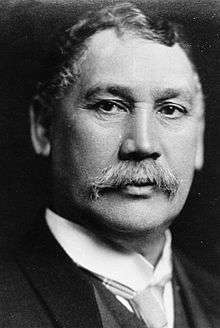 |
16 March 1892 | 20 February 1896 | Ballance | ||
| Seddon | ||||||
| Alfred Cadman | .jpg) |
21 December 1899 | 9 May 1901 | |||
| William Montgomery |  |
19 July 1893 | 7 November 1895 | |||
| Mahuta Tāwhiao | .jpg) |
22 May 1903 | 6 August 1906 | |||
| Hall-Jones | ||||||
| Āpirana Ngata | 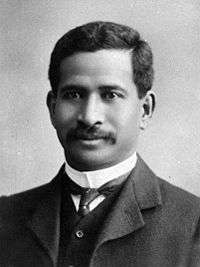 |
7 January 1909 | 28 March 1912 | Ward | ||
| Peter Buck | 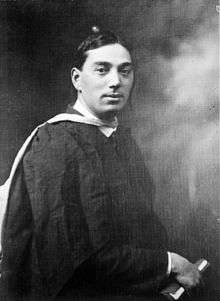 |
28 March 1912 | 10 July 1912 | Mackenzie | ||
| Thomas Buxton | 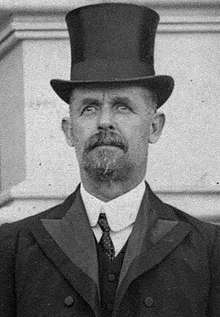 |
28 March 1912 | 10 July 1912 | |||
| Māui Pōmare | 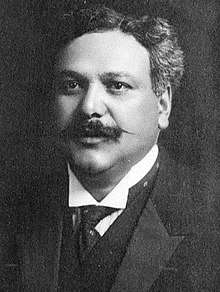 |
10 July 1912 | 3 May 1916 | Massey | ||
| William Fraser |  |
27 July 1920 | 16 July 1923† | |||
| David Guthrie | 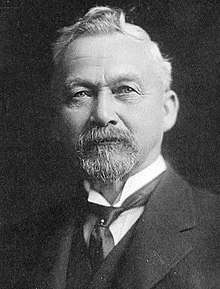 |
25 June 1924 | 31 March 1927† | |||
| Bell | ||||||
| Coates | ||||||
| Heaton Rhodes | .jpg) |
18 January 1926 | 10 December 1928 | |||
| Francis Bell | 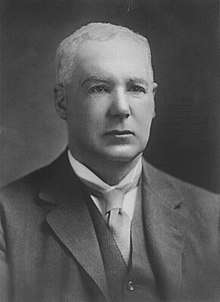 |
24 May 1926 | 25 August 1928 | |||
| Sir Joseph Ward |  |
28 May 1930 | 8 July 1930† | Forbes | ||
| Robert Masters |  |
20 August 1930 | 22 September 1931 | |||
| Mark Fagan |  |
6 December 1935 | 18 July 1939 | Savage | ||
| David Wilson | 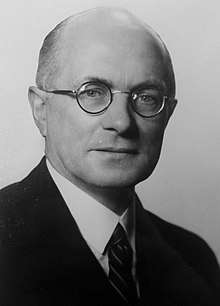 |
18 November 1939 | 30 May 1940 | |||
| Fraser | ||||||
| Paraire Karaka Paikea |  |
21 January 1941 | 6 May 1943† | |||
| Eruera Tirikatene | 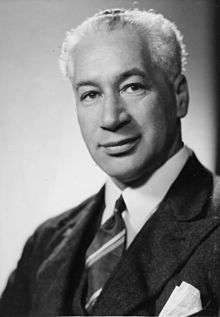 |
26 May 1943 | 13 December 1949 | |||
| Adam Hamilton | .jpg) |
16 July 1940 | 5 October 1942 | |||
| Gordon Coates | 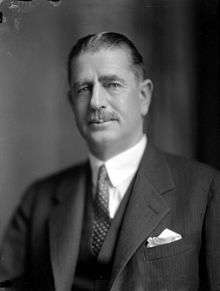 |
16 July 1940 | 5 October 1942 | |||
| William Polson | 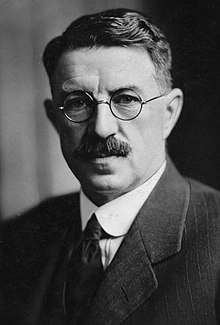 |
15 March 1950 | 12 December 1950 | Holland | ||
| Sidney Holland | _2.png) |
20 September 1957 | 12 December 1957 | Holyoake | ||
| David Seath | 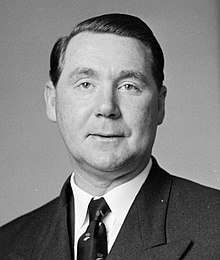 |
24 January 1962 | 20 December 1963 | |||
| Hugh Watt | 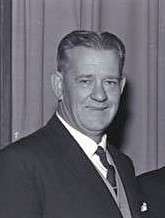 |
13 March 1975 | 12 December 1975 | Rowling | ||
Norway
From 2009 to 2013 Karl Eirik Schjøtt-Pedersen (Labour) was a Minister without Portfolio and Chief of Staff in the Prime Ministers Office, where his job was to co-ordinate within government.
Philippines
During the Japanese Occupation of the Philippines, then-Senate President Manuel Roxas was appointed Minister without Portfolio by the Japanese Government.
Portugal
Following the Carnation revolution, several politicians were made ministers without portfolio:
- Álvaro Cunhal (1st, 2nd, 3rd, 4th provisional government)
- Ernesto Melo Antunes (2nd, 3rd provisional government)
- Francisco Pereira de Moura (1st, 4th provisional government)
- Francisco Sá Carneiro (1st provisional government)
- Joaquim Magalhães Mota (2nd, 3rd, 4th provisional government)
- Jorge Campinos (1st constitutional government)
- Mário Soares (4th provisional government)
- Vítor Alves (2nd, 3rd provisional government)
Serbia
From 2007 to 2008, Dragan Đilas was a "minister without portfolio" in charge of the National Investment Plan.
- Milan Krkobabić (2016)
- Slavica Đukić Dejanović (2017)
- Nenad Popović (2017)
Taiwan
In the Executive Yuan of the Republic of China, there are several such ministers, at one time. Currently, the ministers without portfolio are:[26]
- Audrey Tang
- Chang Ching-sen
- Chen Mei-ling, also serving as Minister of National Development Council
- John Deng
- Lo Ping-cheng
- Lin Wan-i
- Wu Tsung-tsong
- Wu Tze-cheng, also serving as Minister of Public Construction Commission
Singapore
In Singapore, the appointment holder is known as a 'Minister in the Prime Minister's Office'.
Sweden
- Dag Hammarskjöld (1951–1953).
- Olof Palme (1963–1965).[27]
Tanzania
President Jakaya Kikwete appointed Professor Mark Mwandosya as a minister without portfolio in 2012.
Uganda
Since 2015, the cabinet list has included a minister without portfolio:
- Abraham Byandala – 2015 until 2016
- Abdul Nadduli – 2016 to 2019
- Kirunda Kivejinja – 2019 to present
United Kingdom
| United Kingdom Minister without Portfolio | |
|---|---|
.svg.png) Royal Arms as used by Her Majesty's Government | |
 | |
| Cabinet Office | |
| Style | The Right Honourable |
| Reports to | The Prime Minister |
| Nominator | The Prime Minister |
| Appointer | The British Monarch on the advice of the Prime Minister |
| Term length | No fixed term |
| Inaugural holder | William Cavendish |
| Formation | January 1805 |
| Website | GOV.UK |
In the United Kingdom, it is often a cabinet position, and is sometimes used to enable people such as the Chairman of the Conservative Party or the Chair of the Labour Party to attend cabinet meetings (if so, they hold the title of "Party chairman"). The sinecure positions of Lord Privy Seal and Chancellor of the Duchy of Lancaster which have few responsibilities and have a higher rank in the Order of Precedence than Minister without Portfolio can also be used for similar effect.
19th century
| Name | Portrait | Concurrent office(s) | Tenure | Political party | Prime Minister | ||
|---|---|---|---|---|---|---|---|
| William Cavendish-Bentinck, 3rd Duke of Portland |  |
January 1805 – February 1806 | Whig | William Pitt the Younger | |||
| William Fitzwilliam, 4th Earl Fitzwilliam | 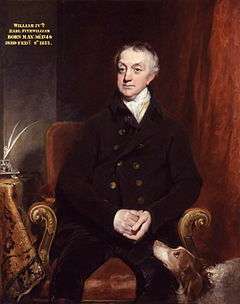 |
October 1806 – March 1807 | William Grenville (Ministry of All the Talents) | ||||
| William Cavendish-Bentinck, 3rd Duke of Portland |  |
4 – 30 October 1809 | Tory | Spencer Perceval | |||
| Dudley Ryder, 1st Earl of Harrowby | 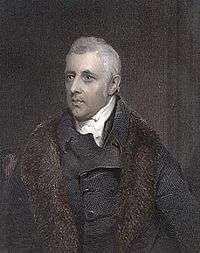 |
November 1809 – June 1812 | Tory (Pittite) | ||||
| John Pratt, 2nd Earl Camden (created 1st Marquess Camden, August 1812) | 8 April – December 1812 | Tory | |||||
| Robert Jenkinson, 2nd Earl of Liverpool | |||||||
| Henry Phipps, 1st Earl of Mulgrave |  |
January 1819 – May 1820 | |||||
| Henry Petty-Fitzmaurice, 3rd Marquess of Lansdowne | 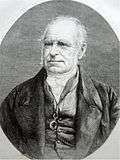 |
April – July 1827 | Whig | George Canning | |||
| William Bentinck, 4th Duke of Portland | 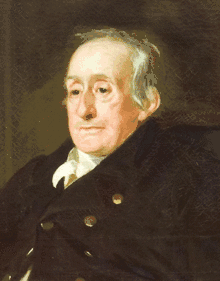 |
July – September 1827 | Tory (Canningite) | ||||
| George Howard, 6th Earl of Carlisle | 22 November 1830 – 5 June 1834 | Whig | Charles Grey, 2nd Earl Grey | ||||
| Arthur Wellesley, 1st Duke of Wellington |  |
3 September 1841 – July 1846 | Conservative | Robert Peel | |||
| Henry Petty-Fitzmaurice, 3rd Marquess of Lansdowne |  |
28 December 1852 – 21 February 1858 | Whig | George Hamilton-Gordon, 4th Earl of Aberdeen (until February 1855) | |||
| Henry John Temple, 3rd Viscount Palmerston | |||||||
| Lord John Russell | 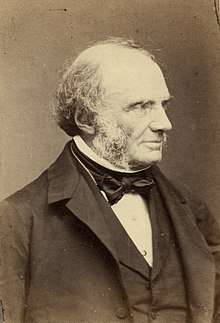 |
February 1853 – June 1854 | George Hamilton-Gordon, 4th Earl of Aberdeen | ||||
| Spencer Horatio Walpole | May 1867 – February 1868 | Conservative | Edward Smith-Stanley, 14th Earl of Derby | ||||
| Michael Hicks Beach | .jpg) |
7 March 1887 – 20 February 1888 | Robert Gascoyne-Cecil, 3rd Marquess of Salisbury | ||||
Edwardian and wartime
| Name | Portrait | Concurrent office(s) | Tenure | Political party | Prime Minister | ||
|---|---|---|---|---|---|---|---|
| Henry Petty-Fitzmaurice, 5th Marquess of Lansdowne |  |
25 May 1915 – December 1916 | Liberal Unionist | H. H. Asquith (Coalition) | |||
| Arthur Henderson | 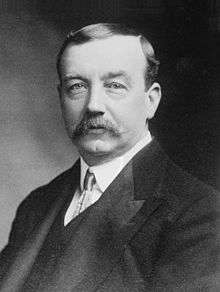 |
Member of the War Cabinet | 10 December 1916 – 12 August 1917 | Labour | David Lloyd George (Coalition) | ||
| Alfred Milner, 1st Viscount Milner |  |
10 December 1916 – 18 April 1918 | Conservative | ||||
| Jan Smuts | 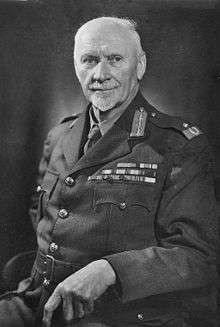 |
22 June 1917 – 10 January 1919 | South African Party | ||||
| Edward Carson | 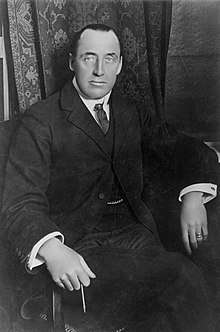 |
17 July 1917 – 21 January 1918 | Ulster Unionist Party (Irish Unionist) | ||||
| George Barnes | 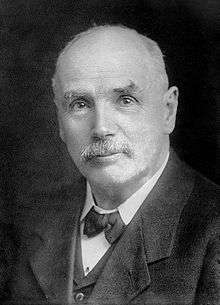 |
Member of the War Cabinet (until October 1919) | 13 August 1917 – 27 January 1920 | Labour | |||
| Austen Chamberlain |  |
Member of the War Cabinet | 18 April 1918 – 10 January 1919 | Conservative | |||
| Eric Campbell Geddes |  |
10 January – 31 October 1919 | |||||
| Laming Worthington-Evans | 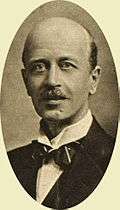 |
Member of the War Cabinet (until October 1919) | 10 January 1919 – 13 February 1921 | ||||
| Christopher Addison | 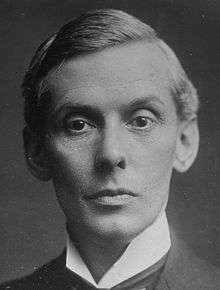 |
1 April – 14 July 1921 | Liberal | ||||
| Anthony Eden | Minister for League of Nations affairs | 7 June – 22 December 1935 | Conservative | Stanley Baldwin (Coalition) | |||
| Eustace Percy | 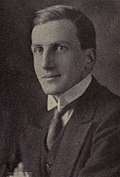 |
7 June 1935 – 31 March 1936 | |||||
| Leslie Burgin | 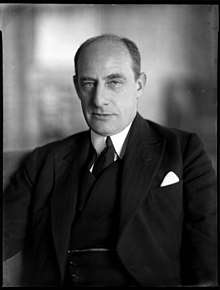 |
Minister of Supply-designate | 21 April – 14 July 1939 | National Liberal Party | Neville Chamberlain (Coalition) | ||
| Maurice Hankey |  |
Member of the War Cabinet | September 1939 – 10 May 1940 | no party | Neville Chamberlain (Coalition) | ||
| Arthur Greenwood | 11 May 1940 – 22 February 1942 | Labour | Winston Churchill (Coalition) | ||||
| William Jowitt |  |
30 December 1942 – 8 October 1944 | |||||
Post-war
| Name | Portrait | Concurrent office(s) | Tenure | Political party | Prime Minister | |||
|---|---|---|---|---|---|---|---|---|
| A. V. Alexander |  |
4 October – 20 December 1946 | Labour Co-operative | Clement Attlee | ||||
| Arthur Greenwood | 17 April – 29 September 1947 | Labour | ||||||
| Geoffrey FitzClarence, 5th Earl of Munster | 18 October 1954 – 1957 | Conservative | Winston Churchill | |||||
| Anthony Eden | ||||||||
| Stormont Mancroft, 2nd Baron Mancroft | 11 June 1957 – 1958 | Harold Macmillan | ||||||
| Henry Scrymgeour-Wedderburn, 11th Earl of Dundee | 23 October 1958 – 1961 | Unionist | ||||||
| Percy Mills, 1st Baron Mills | Deputy Leader of the House of Lords | 9 October 1961 – 14 July 1962 | Conservative | |||||
| Bill Deedes | 13 July 1962 – 16 October 1964 | |||||||
| Alec Douglas-Home | ||||||||
| Peter Carington, 6th Baron Carrington | 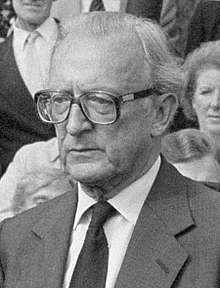 |
Leader of the House of Lords | 20 October 1963 – 16 October 1964 | |||||
| Eric Fletcher | 19 October 1964 – 6 April 1966 | Labour | Harold Wilson | |||||
| Arthur Champion, Baron Champion | Deputy Leader of the House of Lords | 21 October 1964 – 7 January 1967 | ||||||
| Douglas Houghton | 6 April 1966 – 7 January 1967 | |||||||
| Edward Shackleton, Baron Shackleton | Deputy Leader of the House of Lords | 7 January 1967 – 16 January 1968 | ||||||
| Patrick Gordon Walker |  |
7 January – 21 August 1967 | ||||||
| George Thomson | 17 October 1968 – 6 October 1969 | |||||||
| Peter Shore | 6 October 1969 – 19 June 1970 | |||||||
| Niall Macpherson, 1st Baron Drumalbyn | 15 October 1970 – 1974 | Unionist | Edward Heath | |||||
| Morys Bruce, 4th Baron Aberdare | 8 January – March 1974 | Conservative | ||||||
| David Young, Baron Young of Graffham |  |
advising on unemployment | 11 September 1984 – 3 September 1985 | Margaret Thatcher | ||||
| Jeremy Hanley | Chairman of the Conservative Party | 20 July 1994 – 5 July 1995 | John Major | |||||
| Brian Mawhinney | 5 July 1995 – 2 May 1997 | |||||||
| Peter Mandelson | called the "Dome Secretary" | 2 May 1997 – 27 July 1998 | Labour | Tony Blair | ||||
21st century
| Name | Portrait | Concurrent office(s) | Tenure | Political party | Prime Minister | ||
|---|---|---|---|---|---|---|---|
| Charles Clarke |  |
Labour Party Chair | 9 June 2001 – October 2002 | Labour | Tony Blair | ||
| John Reid |  |
24 October 2002 – April 2003 | |||||
| Ian McCartney | .jpg) |
4 April 2003 – May 2006 | |||||
| Hazel Blears | 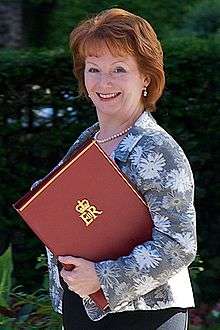 |
5 May 2006 – June 2007 | |||||
| no appointment | 28 June 2007 – May 2010 | Gordon Brown | |||||
| Sayeeda Warsi, Baroness Warsi | 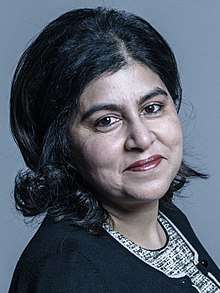 |
Co-Chairman of the Conservative Party | 12 May 2010 – September 2012 | Conservative | David Cameron (Coalition) | ||
| Grant Shapps | 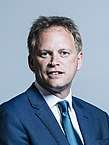 |
4 September 2012 – May 2015 | |||||
| Kenneth Clarke |  |
Trade envoy | 4 September 2012 – July 2014 | ||||
| John Hayes | 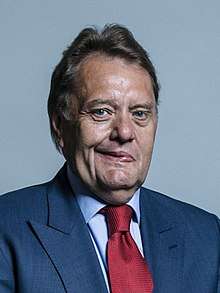 |
Senior Parliamentary Adviser to the Prime Minister (Cabinet Office) | 28 March 2013 – July 2014 | ||||
| Robert Halfon | 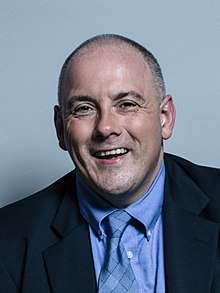 |
Deputy Chairman of the Conservative Party | 11 May 2015 – 17 July 2016 | David Cameron | |||
| no appointment | 17 July 2016 - 8 January 2018 | Theresa May | |||||
| Brandon Lewis | 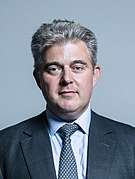 |
Chairman of the Conservative Party | 8 January 2018 – 24 July 2019 | ||||
| James Cleverly | 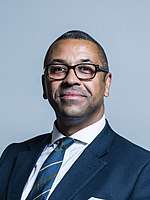 |
24 July 2019 – 13 February 2020 | Boris Johnson | ||||
| Amanda Milling |  |
13 February 2020 – present | |||||
United States
In the United States, an individual who has great influence on government affairs without holding formal office might be described as a "minister without portfolio". Such an appellation is completely unofficial (possibly intended jokingly or disparagingly) and merely serves to underscore the extent of the individual's already-existing influence; it does not grant any new influence or power. Examples include Bernard Baruch,[28] Arthur Burns,[29] and Ivanka Trump.[30]
References
- "Mr Bruce to be Minister without Portfolio". Retrieved 24 January 2017.
- "Bangladesh's PM Sheikh Hasina keeps Home, Foreign Affairs, Defence portfolios". economictimes.indiatimes.com. PTI. Retrieved 2 February 2016.
- "Just what is a minister without portfolio?". www.rediff.com. Retrieved 13 July 2018.
- "Vajpayee reinducts Mamata Banerjee as cabinet minister without portfolio". India Today. Retrieved 13 July 2018.
- "Congress: 'Minister without portfolio' is giving 'gyan': Congress hits back at Jaitley's blog". The Times of India.
- "Ministers and Secretaries (Amendment) Act 1939, Section 4: Minister without portfolio". Irish Statute Book. 21 December 1939. Retrieved 18 July 2020.
- Chubb, Basil (1982). Government & Politics of Ireland (2nd ed.). Stanford University Press. p. 170. ISBN 0-8047-1115-1.
- "Emergency Powers Act 1939; §6 Delegation of statutory powers and duties". Irish Statute Book. 3 September 1939. Retrieved 18 July 2020.
- "Air-Raid Precautions (Approval of Expenditure by Essential Undertakers) (Amendment) (No. 2) Regulations 1944". Irishstatutebook.ie. 30 September 1943. Retrieved 18 July 2020.
- "Ministers and Secretaries (Amendment) Bill 1977: Fifth Stage". Dáil debates. Oireachtas. 10 November 1977. Retrieved 8 May 2012.
The Minister for Economic Planning and Development is a member of the Government not having charge of a Department of State, who is therefore, under section 4 (2) of the Ministers and Secretaries (Amendment) Act 1939 a Minister without portfolio. His title is not derived from the title of a Department of which he is head, because it does not exist, but it is a title that has been assigned to him by the Government pursuant to section 4 (3) of the 1939 Act.
- "Appointment of Taoiseach and Nomination of Members of Government – Dáil Éireann (21st Dáil) – Tuesday, 5 July 1977". Houses of the Oireachtas. Retrieved 1 February 2020.
- "Ministers and Secretaries (Amendment) Act, 1977 Section 2". Irish Statute Book. Attorney General. 6 December 1977. Retrieved 8 May 2012.
- "Ministers and Secretaries (Amendment) Act 1977 (Appointed Day) Order 1977". Irish Statute Book. Attorney General. 9 December 1977. Retrieved 3 August 2020.
- "Appointment of Ministers and Ministers of State – Dáil Éireann (31st Dáil) – Tuesday, 15 March 2011". Houses of the Oireachtas. Retrieved 16 March 2020.
- "Ministers and Secretaries (Amendment) Act 2011, Section 7". Irish Statute Book. Dublin: Attorney General. 4 July 2011. Retrieved 2 August 2020.
- "Ministers and Secretaries (Amendment) Act 2011 (Appointed Day) Order 2011". Irish Statute Book. Dublin: Attorney General. Retrieved 8 May 2012.
- "Appointment of Members of Government and Ministers of State – Dáil Éireann (32nd Dáil) – Tuesday, 20 June 2017". Houses of the Oireachtas. Retrieved 14 January 2020.
- "Ministers and Secretaries (Amendment) Act 2017, Section 1: Department of Rural and Community Development". Irish Statute Book. 19 July 2017. Retrieved 4 August 2020.
- "Appointment of Ministers and Ministers of State – Dáil Éireann (33rd Dáil) – Tuesday, 7 July 2020". Houses of the Oireachtas. Retrieved 7 July 2020.
- "Decreto del Presidente della Repubblica 30 gennaio 2015 – Accettazione delle dimissioni della dott.ssa Maria Carmela LANZETTA dalla carica di Ministro senza portafoglio. (15A00810) (GU Serie Generale n.27 del 3-2-2015)". The official website of the Gazzetta Ufficiale.
- "Official: New Cabinet appointed – huge overhaul as only five ministers keep places - The Malta Independent". www.independent.com.mt. Retrieved 2020-02-15.
- "Updated (3): Konrad Mizzi, Keith Schembri to remain at Castille; Mallia returns to Cabinet - The Malta Independent". www.independent.com.mt. Retrieved 2017-04-27.
- "Parlament Ta' Malta". parlament.mt. Archived from the original on 2017-03-26. Retrieved 2017-04-27.
- "Congress leader Mahat to join cabinet". Setopati.net. 2014-02-11. Retrieved 2016-07-27.
- Wilson, James Oakley (1985) [First published in 1913]. New Zealand Parliamentary Record, 1840–1984 (4th ed.). Wellington: V.R. Ward, Govt. Printer. OCLC 154283103.CS1 maint: ref=harv (link)
- "Premier-designate finalizes his Cabinet lineup". Focustaiwan.tw. 2016-04-28. Retrieved 2016-07-27.
- "Olof Palme". Government Offices of Sweden. 27 February 2016.
he was a minister without portfolio from 1963 to 1965
- Bauman, Michael (1984-06-27). "Mysterious Baruch". Milwaukee Journal. p. 18. Retrieved 31 March 2012.
- "The Administration: Minister Without Portfolio". Time. 1969-02-07. Retrieved 31 March 2012.
- Mahnken, Kevin (2020-07-06). "The Veepstakes Is Taking Over, But the Education World Wants to Know: Who Will Replace DeVos?". The 74. Retrieved 2020-07-09.
External links
- List of Canadian Ministers Without Portfolio and Ministers of State (Parliament of Canada Website)
- Taiwanese Ministers Without Portfolio